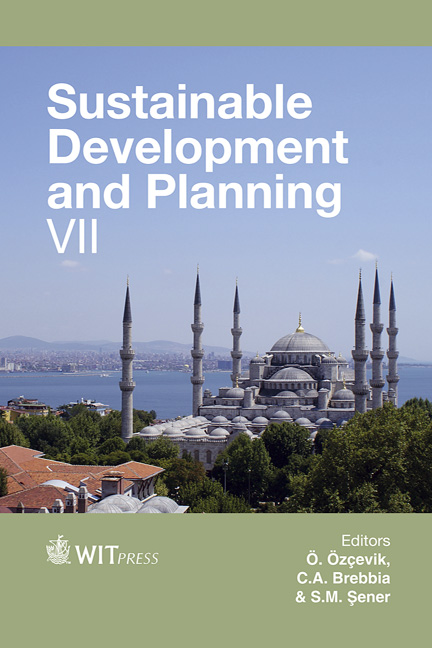Sustainable Urban Architecture: Challenges To The Development Of Valleys Of Big Plain Rivers – Salado River Coastal Area, Santa Fe, Argentina
Price
Free (open access)
Transaction
Volume
193
Pages
12
Page Range
69 - 80
Published
2015
Size
2,878 kb
Paper DOI
10.2495/SDP150061
Copyright
WIT Press
Author(s)
C. Filí Tujchneider, M. V. Silvestre
Abstract
Santa Fe city in Argentina and the effects of the Salado river flood in the year 2003, which left a third of the urban area underwater, motivated at the time the study of an integral urban planning approach to critical territorial management subjects. The magnitude of the hydrological phenomena registered in recent years, its socio-economical urban impact together with the actions tended to strengthen the urban-regional roles of the city, outlined the necessity to re-think and elaborate new alternatives for the occupation of alluvial areas.
Aiming to screen further from the traditional architectural scope and attitude towards the environment as a built-entity, an interdisciplinary strategy was led to register and evaluate a wide range of ecological factors, from the identification of the supporting biophysical environment and resources, infrastructure, social territorial dynamics and the economic implications of land use to the legal framework available. All this contributed to elaborating a comprehensive planning strategy of the ecological aspects, providing guidelines both to nonstructural and structural sustainable urban architecture hypothesis.
Over a decade from such a severe event, some programmatic political statements from public administration have been made and the aspects of such a complex problematic have been approached. The recent announcement of partial structural intervention on the study area updates the pertinence of the subject formerly addressed. Comparing the characterization of ongoing public actions with the hypothesis studied, enables us to shed light on the paradigms under which actual territorial planning is being led, providing conceptual and methodological tools to enrich the disciplinary outlook of architecture. The latter is currently of vital importance as this wider range of perspective is required to enable sustainable urban and territorial management. A new academic paradigm must be set towards interdisciplinary knowledge both in graduate and postgraduate studies, as new generations of professional and political agents must be educated in sustainable management.
Keywords
sustainable, urban, architecture, territorial, management, alluvial areas, interdisciplinary, strategy, paradigms, education





